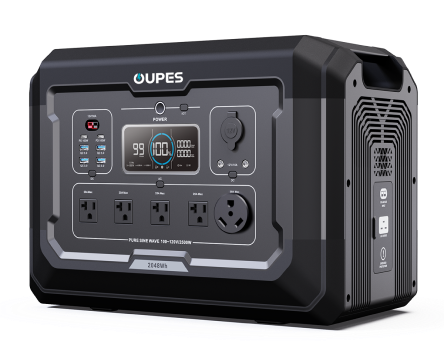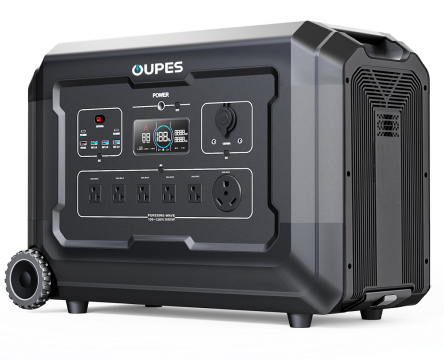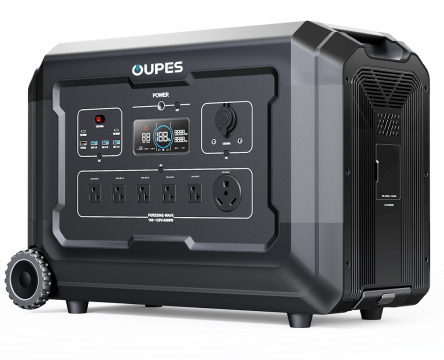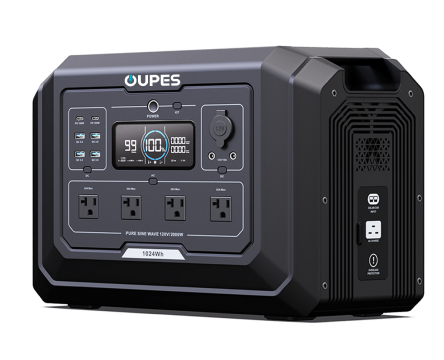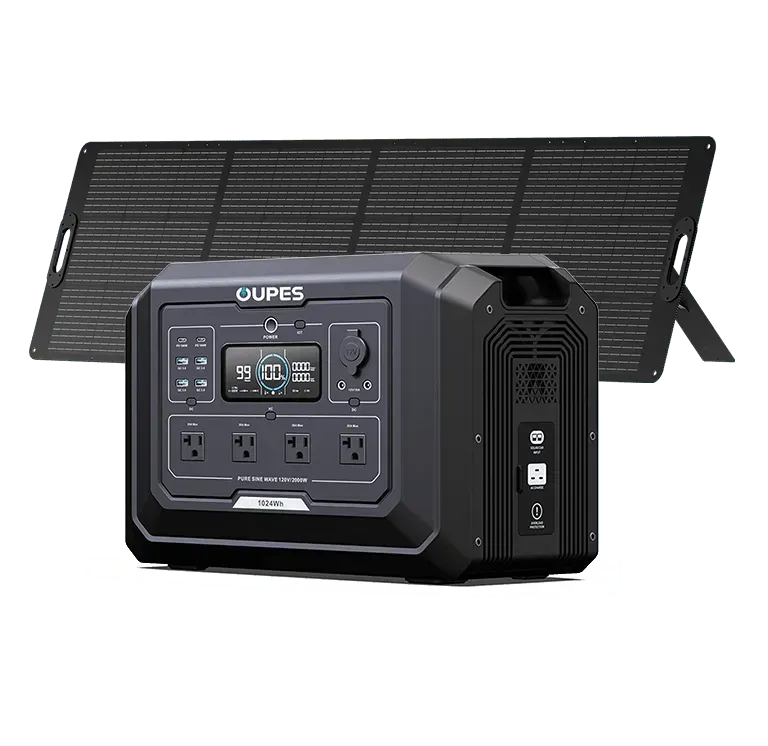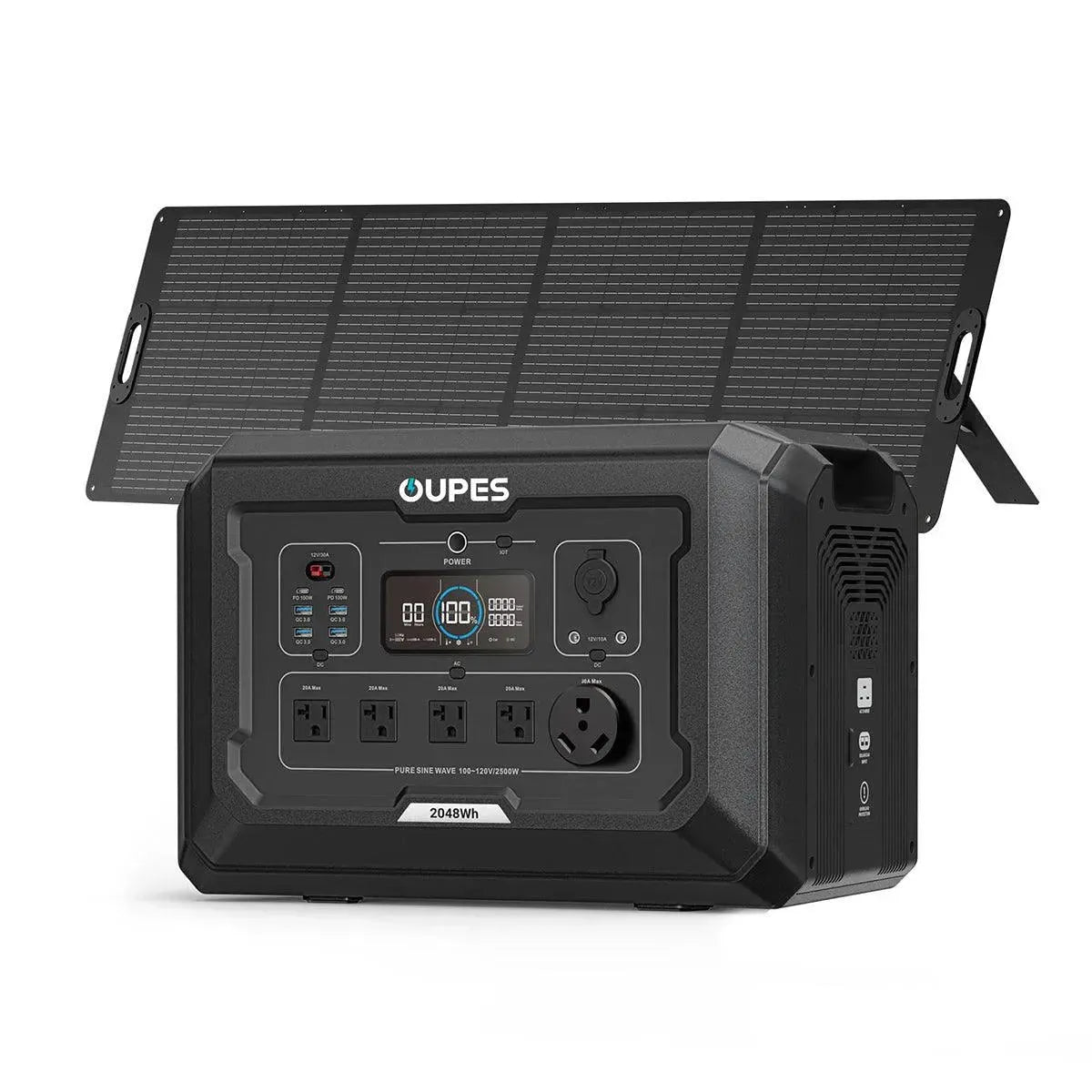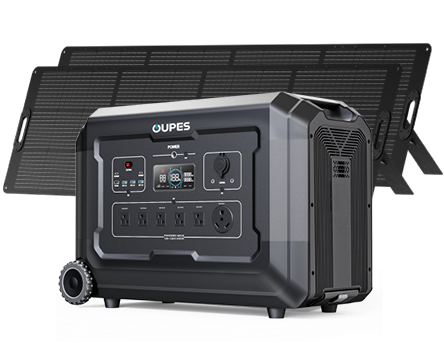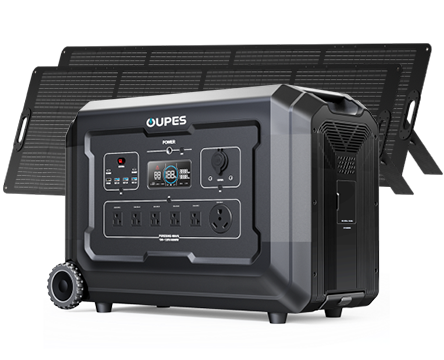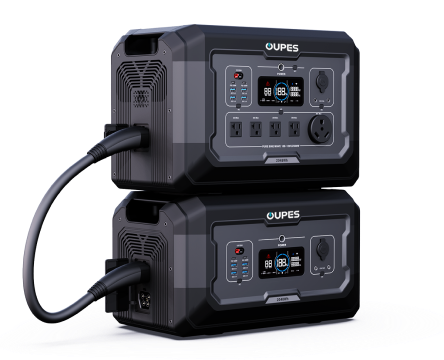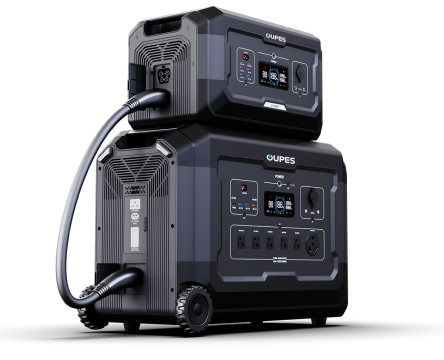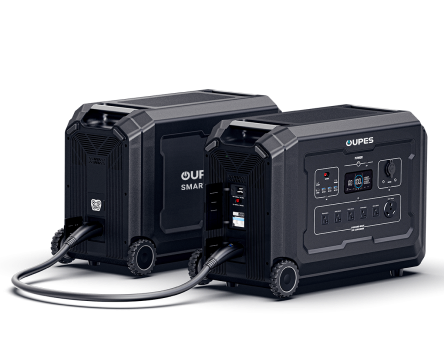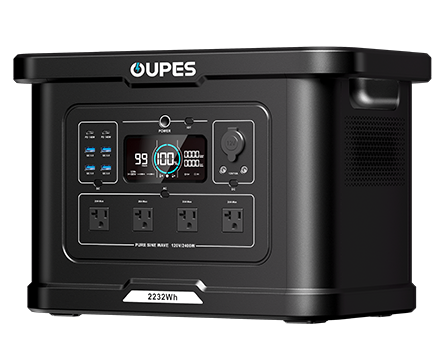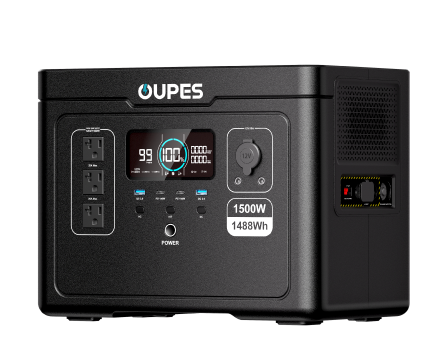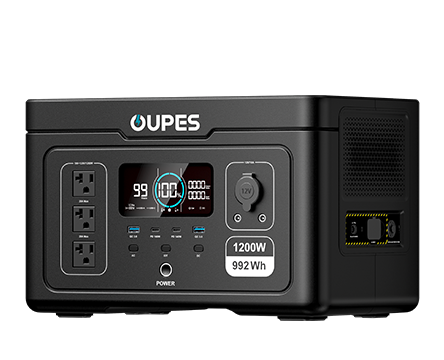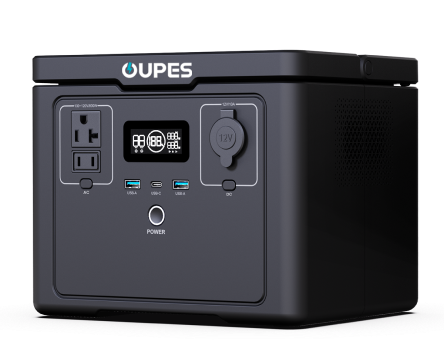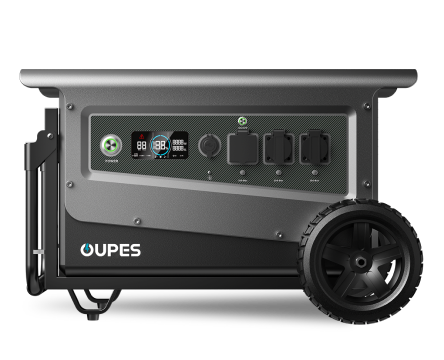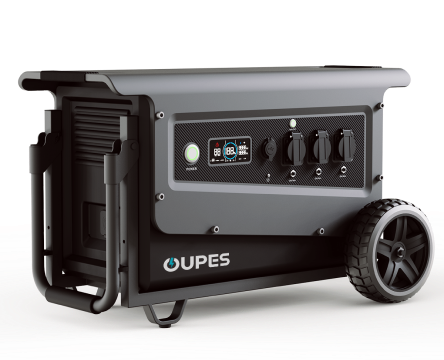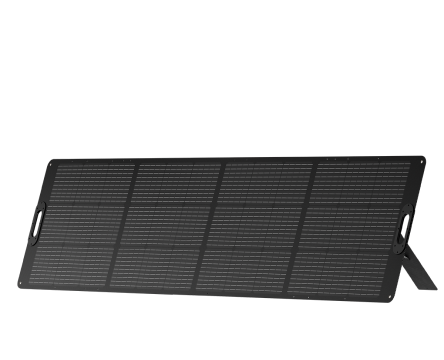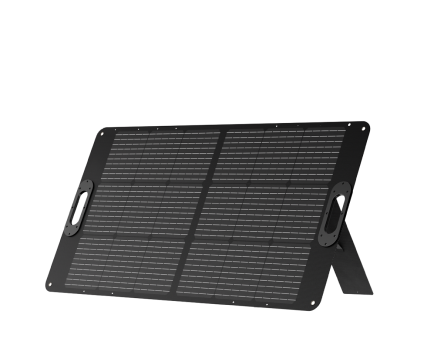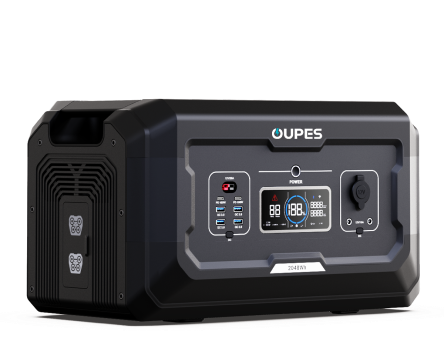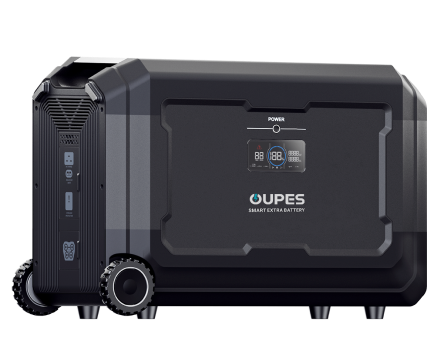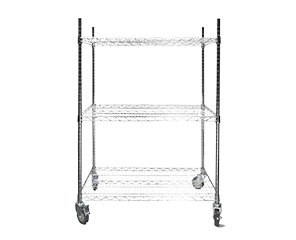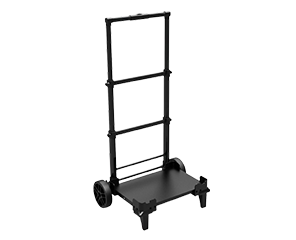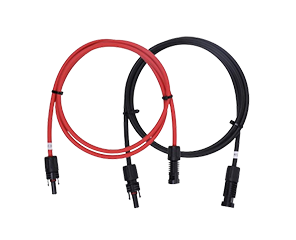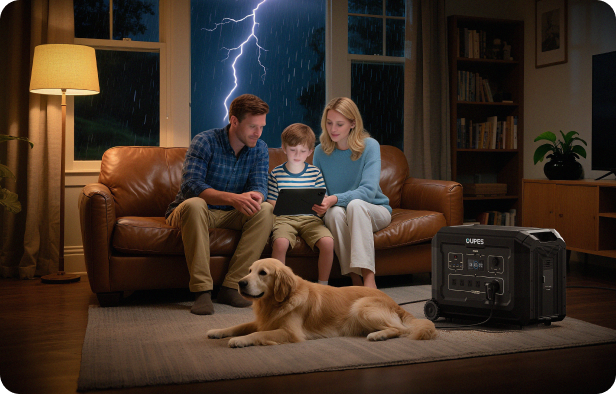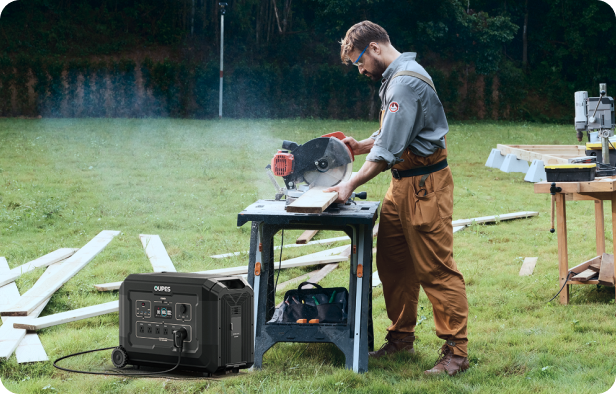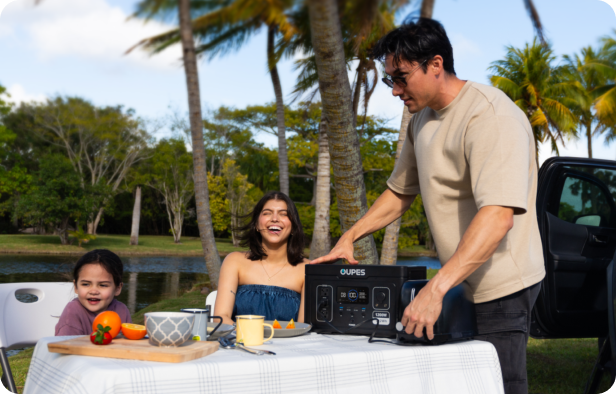
Electric stoves are a staple in modern kitchens, offering convenience, consistent heat, and cleaner energy usage compared to gas stoves. But how much energy do they really consume? Whether you're aiming to lower your electricity bills or planning to run your stove off-grid with a power station, understanding watts and amps is essential.
In this article, we’ll break down how electric stove energy usage works, how to calculate your stove’s power draw, and how OUPES power stations can provide reliable support for off-grid or backup cooking solutions.
Understanding Electric Stove Wattage
Electric stoves operate by converting electrical energy into heat using resistive heating elements. The amount of electricity an electric stove uses is measured in watts (W), which indicate how much power the appliance consumes per hour.
Typically, electric stove burners use between 1,000 to 3,000 watts depending on their size and setting. Here’s a quick look at common wattage levels for different burners:
| Burner Size | Average Wattage |
|---|---|
| Small (6-inch) | 1,000 - 1,500 W |
| Medium (7-8 inch) | 1,500 - 2,000 W |
| Large (9-12 inch) | 2,000 - 3,000 W |
Ovens also draw significant power—usually between 2,000 and 5,000 watts, especially during the preheating phase. On average, a full-size electric stove and oven combo may use around 7,000 to 12,000 watts in total when all burners and the oven are operating simultaneously.
These wattage ratings are critical when determining if your off-grid setup or backup power station can support cooking needs. For instance, a high-capacity solution like the OUPES Mega 5 Home Backup & Portable Power Station with 4000W continuous output and 5040Wh capacity is well-suited to support electric stove usage in limited scenarios.
How Amps and Volts Affect Stove Usage
In addition to watts, electric stoves are rated in amps and volts. These two values are closely related to watts through the formula:
Watts = Amps × Volts
Most electric stoves in the U.S. operate on a 240-volt circuit. Using the formula, a burner drawing 2,000 watts on a 240V circuit pulls around 8.33 amps (2000 ÷ 240 = 8.33). If you have multiple burners on at once, the total amperage adds up quickly, often requiring a dedicated 40- to 50-amp circuit.
This becomes particularly important when selecting a backup power source. For example, if you plan to run a single 2,000W burner for an hour, you’ll need a power station that can handle at least 8.33 amps continuously at 240V—or more practically, a system that can handle the equivalent wattage at 120V if using a step-down configuration.
The OUPES Mega 3 Home Backup & Portable Power Station offers 3600W continuous output and a 3072Wh battery, making it a powerful option for running high-wattage appliances like a stove. It’s particularly useful in emergency scenarios when grid power is unavailable but cooking is still essential.
Calculating Daily and Monthly Energy Consumption
To estimate how much energy your stove consumes over time, multiply the power usage in kilowatts (kW) by the number of hours used. For example, if you use a 2,500-watt burner for 1.5 hours a day:
2,500 watts = 2.5 kW
2.5 kW × 1.5 hours = 3.75 kWh per day
3.75 kWh/day × 30 days = 112.5 kWh per month
Considering average residential electricity rates in the U.S. range between $0.13–$0.17 per kWh, running that single burner could cost between $14.63 to $19.13 per month. Of course, real usage will vary depending on your cooking habits, number of burners used, and oven usage frequency.
If you’re trying to offset this energy cost with solar or backup systems, understanding daily consumption helps size your setup accordingly. For instance, pairing your stove with a system like the OUPES Titan 3 Power Station (3600W output, 3072Wh capacity) lets you manage short-term or partial cooking use during emergencies or outdoor cooking events.
Moreover, adding a compatible solar panel setup can help recharge your power station during the day, effectively extending the utility of your OUPES station and minimizing dependence on grid electricity.
Using Power Stations to Support Electric Stoves
Running an electric stove entirely on a portable power station isn’t always practical unless you're using a very energy-efficient burner or cooking for a short duration. However, with a high-capacity system, it becomes possible to cook in off-grid situations, emergencies, or during blackouts.
The critical specs to consider in a power station include:
- Continuous Output Wattage: Your power station must support the required output of the stove. If your stove needs 2500W, the power station should deliver that and more continuously.
- Battery Capacity (Wh): This determines how long you can run the stove. A 5040Wh station can power a 2500W burner for roughly 2 hours (5040 ÷ 2500 = 2.02 hours).
- Surge Power: Some stoves may draw a brief surge of power when turning on, so the power station should accommodate this surge without shutting down.
- Recharging Options: Fast AC recharge, solar input, and car charging options improve flexibility.
The OUPES Titan 5 Portable Power Station stands out for such tasks. With 4000W output and 5040Wh capacity, it can handle an electric stove or oven for short periods, ideal for off-grid cabins, RVs, or emergency cooking scenarios.
It’s important to use energy-efficient cooking methods when running off a battery-powered source. Opt for pressure cookers, smaller burners, and avoid prolonged preheating to stretch your available power.
Improving Efficiency When Cooking with Electric Stoves
Even if you’re not using a power station, improving your stove’s energy efficiency helps lower costs and reduces environmental impact. Simple adjustments to your cooking routine can lead to substantial savings.
Here are a few practical tips:
- Use the Right Size Burner: Match pot size to burner size to avoid wasting heat.
- Use Lids: Cooking with lids retains heat and reduces cooking time.
- Preheat Only When Necessary: Many dishes don't need a preheated oven.
- Batch Cooking: Prepare meals in larger quantities to make the most of your energy use.
- Use Residual Heat: Turn off the stove a few minutes before finishing—heat remains trapped for a while.
When cooking off-grid, these strategies are even more crucial. Every watt-hour saved extends your cooking time and preserves valuable battery life. For light cooking tasks or boiling water, even a mid-tier station like the OUPES Exodus 1200 Portable Power Station (1200W output, 992Wh capacity) can be effective with a compact induction cooktop.
Over time, being mindful of how much energy your stove consumes—and how to reduce it—can make a big difference, especially if you're trying to rely more on solar or portable power solutions for energy independence.
Conclusion
Electric stoves are powerful and convenient, but they can be energy-intensive. By understanding the watts and amps involved, you can better manage your energy use, plan for off-grid or backup cooking, and make informed decisions about which appliances and power stations suit your needs.
With a range of high-capacity products like the OUPES Mega 5, Titan 3, and Exodus 1200, OUPES provides reliable solutions for running electric cooking appliances—even when the grid goes down. Whether you're preparing for emergencies or moving toward energy independence, smart energy planning starts with understanding your stove’s power draw.

